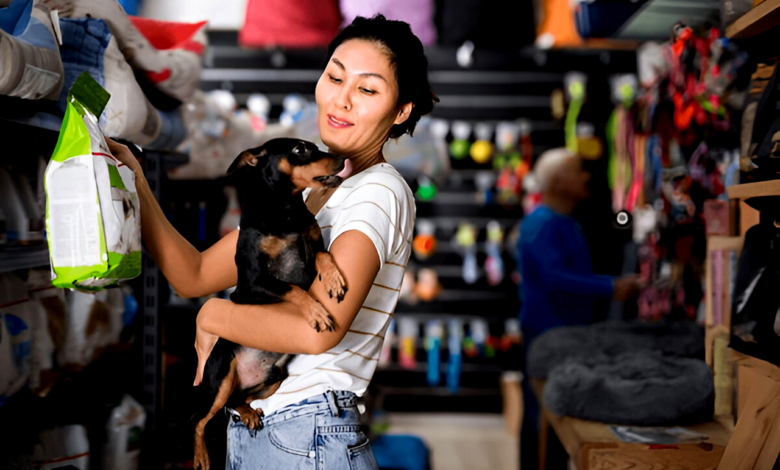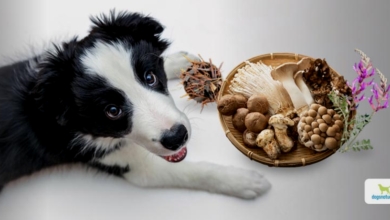
Homemade Pet Food Recipes for a Healthier Diet
Discover balanced, natural meals for dogs and cats. Learn tips for safe, nutritious homemade pet food today!
In recent years, homemade pet food recipes for a healthier diet have gained significant attention as pet owners increasingly prioritize the well-being of their beloved companions. With growing concerns about the quality and safety of commercial pet foods—ranging from recalls to the use of artificial additives—many guardians are turning to homemade alternatives to ensure their pets receive the best possible nutrition. Crafting meals at home allows for complete control over ingredients, enabling pet owners to tailor recipes to their animal’s specific dietary needs, whether addressing allergies, weight management, or chronic health conditions. This shift reflects a broader movement toward holistic wellness, mirroring the human trend of embracing whole, unprocessed foods. However, creating balanced and safe homemade pet food requires careful planning and a solid understanding of your pet’s nutritional requirements.
The appeal of homemade pet food lies not only in its potential health benefits but also in the opportunity to strengthen the bond between pets and their owners. Preparing meals for your furry friend can be a rewarding experience, transforming mealtime into an act of love and care. Yet, it’s essential to approach this practice with caution, as nutritional imbalances can lead to serious health issues. This guide will explore the benefits, challenges, and practical steps to creating wholesome homemade meals for dogs and cats, ensuring your pet thrives on a diet as unique as they are. Whether you’re a seasoned home cook or a beginner, this journey toward healthier pet nutrition is one worth taking.
The Rise of Homemade Pet Food: Why It Matters
Modern pet owners are increasingly skeptical of mass-produced pet foods, particularly after recalls and studies highlighting inconsistencies in nutritional quality. A 2021 survey by the American Pet Products Association found that 45% of pet owners prefer “natural” or “organic” options for their pets. Homemade diets offer control over sourcing, allowing guardians to select human-grade meats, fresh vegetables, and whole grains tailored to their pet’s digestive needs. For instance, dogs with grain sensitivities can thrive on grain-free recipes featuring sweet potatoes and lean proteins, while cats—obligate carnivores—require recipes rich in animal-based proteins and taurine. Beyond health, homemade meals can deepen the human-animal bond, transforming mealtime into an act of love. Yet, this practice isn’t without risks: nutritional imbalances, such as calcium deficiencies in growing puppies or excess fat in sedentary pets, can arise without proper guidance. Thus, collaboration with a veterinary nutritionist is critical to designing recipes that meet the Association of American Feed Control Officials (AAFCO) standards.
Essential Nutrients for Dogs and Cats: Building Blocks of Health
Crafting balanced meals requires understanding species-specific nutritional needs. Dogs, as omnivores, thrive on a mix of protein (25–30%), fats (10–15%), and carbohydrates (30–50%), supplemented with vitamins like A, D, and E. Cats, however, require a diet dominated by animal protein (30–40%) and fats (20–24%), with minimal carbohydrates. Key nutrients include:
- Taurine: An amino acid critical for feline heart and eye health, found in chicken hearts and fish.
- Calcium-Phosphorus Ratio: Vital for bone health; eggshell powder or ground bone can balance this in homemade diets.
- Omega-3 Fatty Acids: Reduce inflammation; incorporate flaxseed (for dogs) or fish oil (for cats).
Ignoring these needs can lead to severe health issues. For example, a 2013 study in the Journal of the American Veterinary Medical Association linked taurine-deficient homemade cat diets to dilated cardiomyopathy. Thus, recipes must be fortified with supplements or whole foods that address these gaps.
Safety First: Avoiding Common Pitfalls
While enthusiasm for homemade pet food is commendable, food safety is paramount. Raw diets, though popular, carry risks of bacterial contamination (e.g., Salmonella or E. coli) for both pets and humans. The FDA recommends cooking meats to 165°F (74°C) to kill pathogens. Additionally, certain human foods are toxic to pets: onions, garlic, grapes, and xylitol (a sweetener) can cause organ failure or death. Cross-contamination must be avoided by washing utensils and surfaces thoroughly. Portion control is equally critical—overfeeding even healthy ingredients can lead to obesity, which affects 60% of cats and 56% of dogs in the U.S., according to the Association for Pet Obesity Prevention.
Crafting Balanced Recipes: A Step-by-Step Approach
Consult a Professional: Partner with a veterinarian or board-certified veterinary nutritionist to analyze your pet’s age, weight, and health status. Bloodwork can identify deficiencies.
Select Quality Ingredients: Opt for organic, non-GMO produce and antibiotic-free meats. Rotate proteins (chicken, turkey, beef) to provide varied amino acids.
Balance Macronutrients: For dogs, a sample recipe might include 50% cooked ground turkey, 25% quinoa, and 25% pureed carrots and spinach. For cats, try 80% shredded chicken thighs, 10% chicken liver, and 10% steamed pumpkin.
Add Supplements: Fish oil for omega-3s, kelp powder for iodine, and a canine/feline multivitamin ensure completeness.
Monitor and Adjust: Track your pet’s weight, coat quality, and energy levels. Gradually transition diets over 7–10 days to avoid gastrointestinal upset.
Sample Recipes for Dogs and Cats
Dog Recipe: Turkey & Veggie Medley
- 2 lbs ground turkey (cooked)
- 1 cup brown rice
- 1 cup chopped carrots
- ½ cup peas
- 1 tbsp fish oil
- 1 tsp ground eggshell (for calcium)
Cat Recipe: Salmon & Chicken Feast
- 1 cup cooked salmon (flaked)
- ½ cup chicken liver (sautéed)
- ¼ cup pumpkin puree
- 1 tsp taurine powder
- ½ tsp krill oil
Both recipes can be batch-cooked and frozen for convenience.
Transitioning to Homemade Food: Patience is Key
Switching from kibble to homemade meals should be gradual. Start by replacing 25% of their commercial food with homemade portions, increasing weekly. Observe stool consistency and appetite—loose stools may indicate a need for more fiber (e.g., psyllium husk) or slower transitions. Hydration is especially crucial for cats, who often derive moisture from wet food; add bone broth to encourage water intake.
Read More: Where to Buy the Best Pet Food in the UK: Top Stores & Online Shops
Conclusion:
Homemade pet food recipes for a healthier diet represent more than a trend—they’re a commitment to a pet’s lifelong well-being. By prioritizing whole ingredients and species-specific nutrition, guardians can mitigate the risks of processed foods while addressing individual health needs. However, success hinges on education and collaboration with professionals. As Pet Food obesity and allergy rates climb, a tailored, homemade diet emerges as a proactive solution, fostering vitality and longevity in our beloved companions.
Embracing homemade pet food is a journey marked by learning and adaptation. While the initial effort may seem daunting, the rewards—a thriving pet with a glossy coat, sustained energy, and fewer vet visits—are immeasurable. Remember, perfection isn’t the goal; consistency and informed choices are. By staying curious, responsive, and dedicated to quality, you’ll nourish not just your pet’s body, but also the trust and love that define your bond.
FAQs
Is homemade pet food healthier than commercial options?
Homemade food can be healthier if balanced properly, offering control over ingredients and avoiding additives. However, improper recipes may lack essential nutrients, so veterinary guidance is crucial.
How much does homemade pet food cost?
Costs vary but often match premium commercial brands. Buying in bulk and seasonal produce can reduce expenses.
Can I feed my pet a vegetarian diet?
Dogs may adapt, but cats require animal protein. Never impose vegetarian diets on cats without veterinary supervision.
How long can homemade pet food be stored?
Cooked meals last 3–4 days refrigerated or 2–3 months frozen. Avoid preservatives by freezing in portion-sized containers.
Do I need to add supplements?
Yes. Most homemade diets require calcium, taurine (for cats), and omega-3 supplements to meet nutritional standards.








One Comment